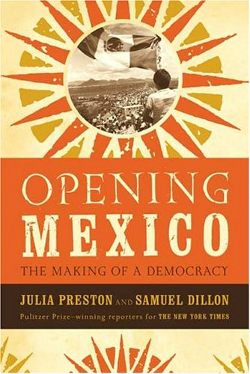The Christian Science Monitor covers the “people power” rebellions that are spreading in Latin America, and Jesse Walker at Reason magazine, notices that “Latin America’s outbreak of people power hasn’t received as much stateside attention as its counterparts in Central Asia and the Middle East… presumably for the same reason media accounts of nonviolent Arab movements often ignore Palestinian resistance to Israel’s ‘security barrier’: The uprisings aren’t aligned with U.S. interests.”
For much of , the chief means of overthrowing a government were guerrilla warfare and military coups. Nonviolent resistance existed — at times it thrived — but it was generally regarded as an odd aberration that rarely worked. But , for a variety of reasons, the trend in revolution-making has been a gradual global shift from violent “people’s war” to nonviolent people power. In an important new book, Unarmed Insurrections, the Rutgers sociologist Kurt Schock points out that there were 31 major nonviolent rebellions in the second and third worlds , starting with the Iranian revolution of . (It’s important to distinguish the overthrow of the Shah, a classic example of people power, from Khomeini’s later consolidation of state power, a much more coercive affair.)
Nonviolent resistance, Schock reminds us, is not the same thing as “passive resistance.” It’s a set of tactics, not a politically correct lifestyle; it’s aimed not at persuading leaders to change their policies, but at making it impossible to enforce those policies. Gene Sharp has been cataloging those tactics for decades, listing 198 of them in ’s three-volume study The Politics of Nonviolent Action and citing several more since then. They fall into three general categories: methods of protest and public persuasion (e.g., a march), of organized noncooperation (e.g., a tax strike), and of “nonviolent intervention” (e.g., a land occupation). Contrary to the conventional wisdom, such methods have frequently worked under repressive dictatorships as well as under relatively benign systems; many times they’ve succeeded where guerrilla tactics have failed. In 23 of those 31 rebellions, from Bolivia to Bulgaria and from Mongolia to Mali, the uprising contributed directly to regime change.
And that statistic understates what has happened, since it focuses on the most visible sort of success. More substantial changes can occur without the government formally changing hands. Of the recent turbulence in Latin America, the most interesting event may be the revolt of the Bolivian Indians. They were the backbone of the protests that drove President Sanchez de Lozada out of power in , and of the more recent turmoil as well, but that’s not what I’m referring to here. I’m referring to the fact that about a fifth of the country’s population now lives in villages that run their own affairs, outside of the capital’s control. This power was not ceded to them. They simply took it.

